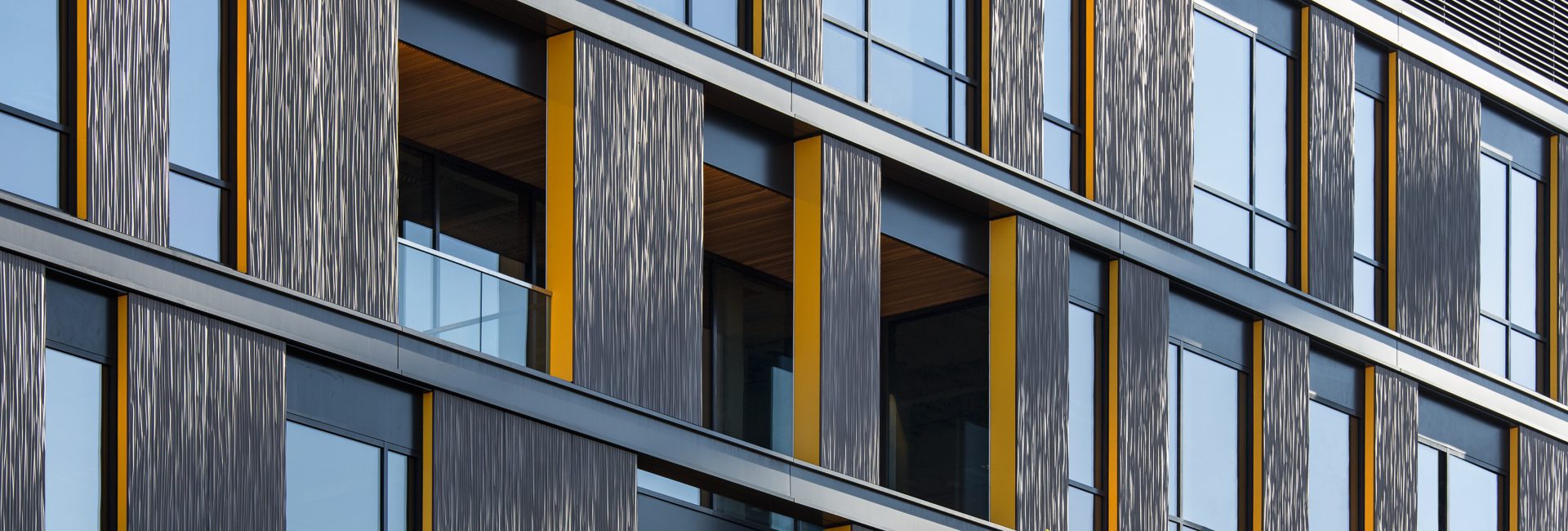Inventive thinking for façade design is paramount for the development of a sensitive piece of architecture. The process of developing a façade is not simply to create the “hot photo,” but is the design team’s opportunity to manifest their beliefs and intuitions about how a building should communicate and interact with both the community within and the campus as a whole. A well designed façade has the capacity to challenge one’s preconceptions about architecture and place, and can offer new, exciting and surprising ways of engaging with buildings and landscape. A strong design process for exploring façade strategies includes asking large questions; how can a façade speak to both the sky and ground, how can something feel massive or light, how can a building invite or deny, how can a façade be an arrow elsewhere or a destination, etc.
There are many different strategies for exploring façade designs, and of course, each has its own merits and shortcomings. A productive approach to designing a façade is to stitch multiple modes of exploration together, and using them to write a more holistic narrative about the experience and goals of the building.

Hand-sketching is an insightful method for exploring façade strategies which helps to quickly clarify design logics and orders. Since sketching allows the author to “pick-and-choose” which details to draw or not draw, it brings attention to the most important aspects of the investigation. This often involves exploring major design drivers and understanding what the major moves of the architecture are. Hand-sketching can get to results quickly, which allows for many different iterations of disparate ideas to be tested and evaluated.

Massing models are developed in conjunction with sketching to explore the scale of architectural moves in the façade. Massing models can be quickly made, and expose how local decisions and larger gestures relate to both the building as a whole and to the site at large. Like sketching, massing models offer the opportunity to exclude unnecessary detail in order to highlight the most important aspects of the façade design.
Detail physical models are invaluable tools for understanding how light, shadow and material interact with and are created by a façade design. These models will often include the “parts” which compose a building’s façade, and assist in exploring how the building operates at the human-scale. Detail physical models have an amazing way of connecting us to the character and technics of a façade strategy.

Digitally rendering façade options are a powerful tool for exploring ideas due to its ability to place the viewer in the space. Renderings work to combine the effects of material, light, shadow, perspective, assemblies and geometry to present a fuller understanding of how one would experience the built architecture. An interesting asset of using digital renderings for design exploration is the ability to communicate with a wider audience of viewers, including those who are not trained in architectural representations, and who otherwise may not be able to fully understand what is being drawn.
Using different exploration tools has allowed our project team to confidently determine which façade design will work successfully to create a positive experience and meet the client’s goals for the building.


